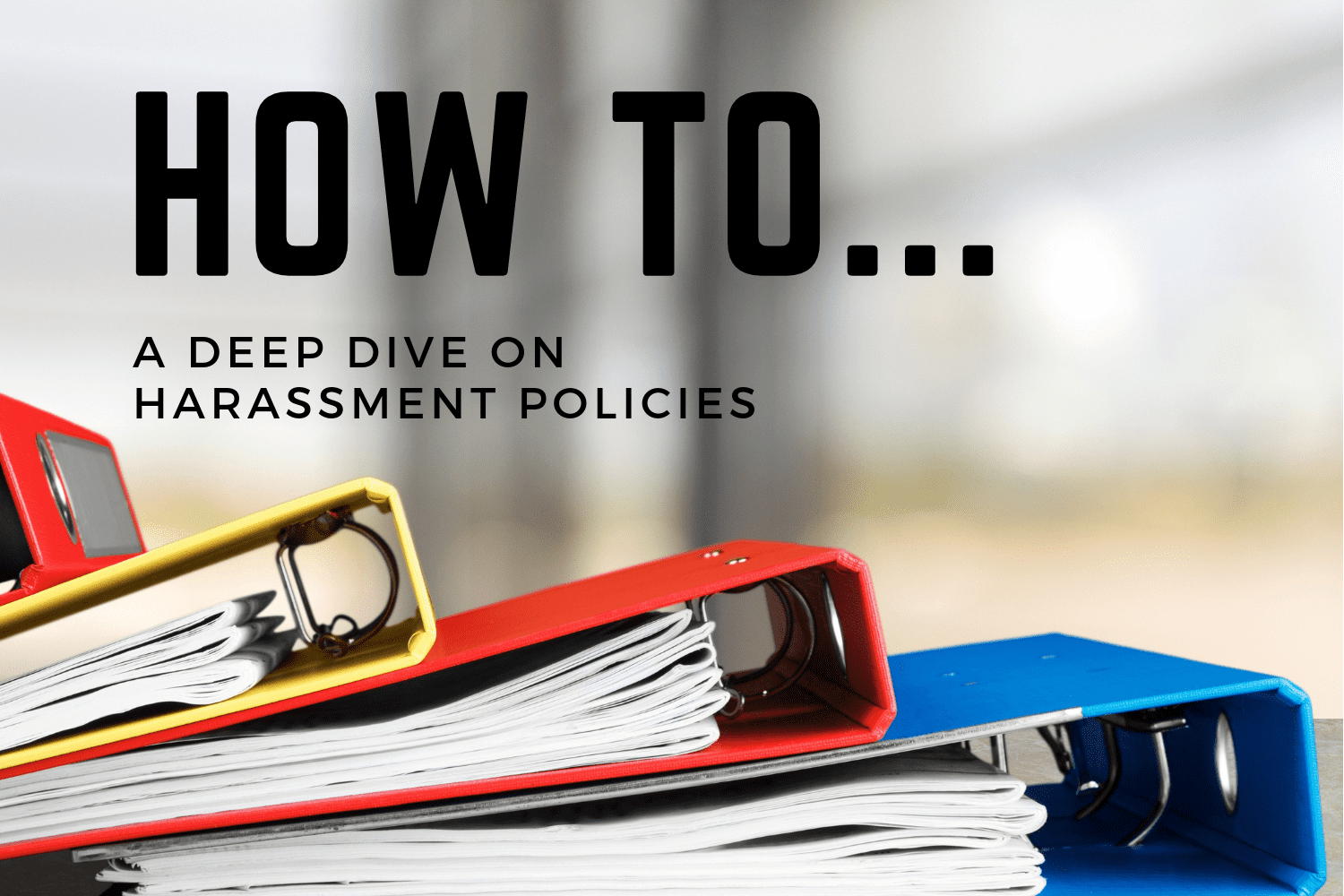Last week we hosted the latest webinar in our “How To …” series, focusing on the nuts and bolts of a harassment policy in light of #MeToo. When I started preparing, I thought, “Not that much has changed as far as what your policy should say.” While I still think that’s true for a company that already had a well thought-out policy, the webinar was quite well-attended and we had more good questions and comments from the audience than we could keep up with – a good problem to have! Given the interest and engagement, we thought it would be a good idea to memorialize and flesh out these conversations for a few weeks here on BT Currents. We will use this sample policy as our discussion guide.
The first item I want to call out is the name of the policy. Our working sample policy is called Harassment And Appropriate Workplace Conduct. That is what I suggest to clients, which has not changed post-#MeToo. But there are two reasons I think it’s important that the policy not be limited to “harassment,” and certainly one of those reasons is greatly heightened by #MeToo.
The first reason relates to defending the employer in any potential future claim by an employee alleging harassment. There is plenty of workplace conduct that our clients would deem inappropriate, and put a stop to, that does not rise to the level of severity and pervasiveness to qualify as “sexual harassment.” I want employers to be able to put a stop to such behavior, which certainly may lead to legally defined harassment, without in effect “agreeing” for future purposes that the conduct constitutes illegal harassment. In other words, when defending a company a year from now, I want to be able to argue that the company responded promptly and appropriately, even if it was not legally actionable harassment.
The second reason not to just call it a “harassment policy” is that I believe the next step in harassment prevention – a step judges and juries will increasingly expect employers to take – is to root out unreported harassment.
For more on that: “What will really move the needle in improving harassment prevention?” Bill Nolan
The decision not to report harassment is complex, and different for different people, but one thought process that people share is: “Well, it doesn’t really rise to the level of harassment so I won’t report it.” Whether people with that thought process know about the “severe and pervasive” standard or not, they have the view that a high level of severity is required before it’s “harassment.”
That’s true to a degree, but as employers we do not want people to wait until they have a big problem. So, somewhat broadening the focus of the policy might invite communication at a lower level. We will go into more depth on this in future posts in this series.
I would love to hear about different ideas in how you name your policy.














